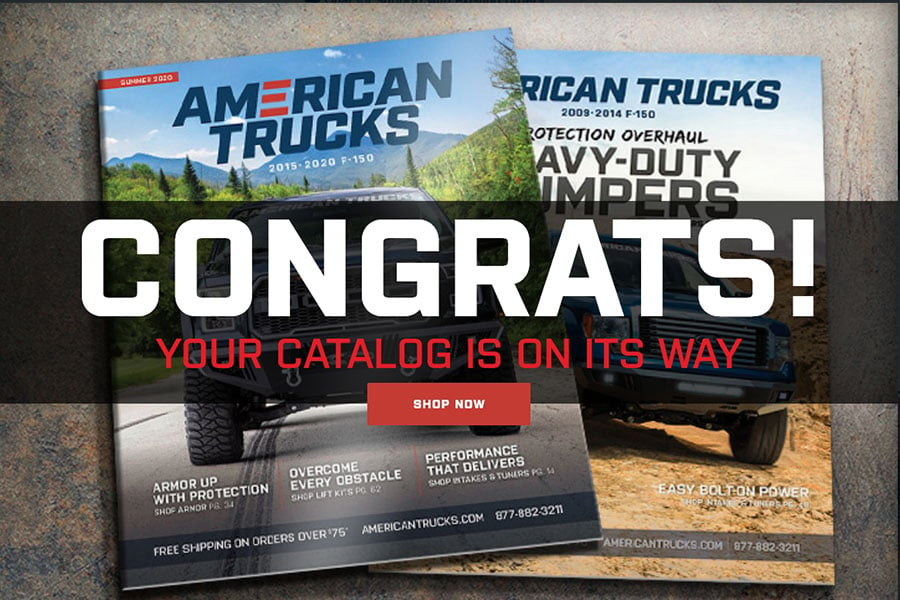
How to Install Daystar 2 in. Comfort Ride Front Torsion Leveling Keys (97-03 4WD) on your Ford F-150
Tools Required
- Floor Jack X 1
- Jack Stands X 2
- Puller Tool X 1
- I-land Tools
- 18mm socket and wrench

Shop Parts in this Guide
Installation steps
1. Place the vehicle on a level surface. Prior to beginning, record ride height on each si de of the vehicle by measur-ing from the center of the spindle to a consistent point on the wheel well. Record these measurements for fu-ture reference.
2. Put the transmission in Park or 1st gear (manual trans-missions) and chock the rear tires.
3. Raise the front of the vehicle using a jack. Raise it enough to completely unload the front suspension. Place a jack stand under each frame rail just behind the lower control arms for the front suspension. Ease the frame down on to the stands, but leave a slight load on the jack as a safety precaution.
4. Verify the front tires are off the ground and that the sus-pension is unloaded, or at full extension travel.
5. Locate the torsion bar crossmember. There is a bolt on each side of the crossmember that adjusts torsion bar preload. Measure or mark the exposed length of the ad-juster bolt for reference during re-assembly. See Figure 1.
6. Position the appropriate torsion bar puller tool on the crossmember. Be sure the top of the puller tool engages the recess present in most crossmembers. Also be sure the lower end of the puller tool engages a recess on the torsion key near the adjuster bolt. See Figure 2.
7. Locate the torsion bar crossmember. There is a bolt on each side of the crossmember that adjusts torsion bar preload. Measure or mark the exposed length of the adjuster bolt for reference during re-assembly. See Figure 1.
8. Position the appropriate torsion bar puller tool on the crossmember. Be sure the top of the puller tool engages the recess present in most cross-members. Also be sure the lower end of the puller tool engages a recess on the torsion key near the adjuster bolt. See Figure 2.

9. Using extreme caution, tighten the puller tool enough to take the load off the adjuster bolt. Remove the adjuster bolt and nut block, then unload the puller tool.
10. Note the orientation of the torsion bar key in relation to the end of the torsion bar. S lide the torsion bar forward, out of the torsion bar crossmember, and set the factory torsion bar key aside. It is not necessary to remove the torsion bars from the vehicle. NOTE: the torsion key should slide easily off the end of the torsion bar. How-ever, depending on the age and use of the vehicle, rust and road debris may prevent easy removal. The installer can use a variety of methods to separate the torsion key if it is "stuck", but using heat is not recommended.
11. Place the Daystar torsion key in the torsion bar cross-member, matching the same orientation as the original key. Slide the torsion bar back through the crossmember and into the torsion key. See Figure 2.
NOTE: Various types of puller tools are available, however, due to the extreme loads present in four-wheel drive suspension systems, we have found the two jaw style tool that clamps to the crossmember tends to slip and damage the crossmember. A C-clamp style puller tool is preferred and available through tool companies such as OTC and Kent Moore.
10.Using the same precautions and procedures that were used during removal, load the torsion bar enough to in-stall the nut block using the appropriate puller tool. Place the nut block back in the crossmember and start the adjuster bolt. Tighten the adjuster bolt to the same exposed length noted during disassembly. Unload the remove the pulled tool.
11. Lower the vehicle to the floor, manually bounce the front of the vehicle several times enough to settle the suspension.
12.Measure the ride height on each side. To raise the height, tighten the torsion bar adjuster bolt; to lower ride height, lessen the adjuster bolt. The torsion key is capa-ble of increasing the ride height 1-1/2" (mid-size) to 2" (full-size) over factory specifications. Do not in-crease ride height above the specification.
13.Realign the vehicle to factory specifications.

IMPORTANT: The net amount of ride height increase de-pends upon the age and use of the vehicle, wheel offset, and numerous other factors. Stated torsion bar ride height in-creases are based upon factory specifications. If the torsion bars were "cranked up" at some point in the past, expect a corresponding reduction in overall height increase with the new torsion keys. Note that torsion bars, like any other spring, are subject to fatigue and sagging over time. Also, torsion bars have different ratings depending on how the vehi-cle was equipped from the factory. In some cases, installing heavier rated bars (which can be purchased from a dealer) may be the only solution to regaining ride height lost from adding heavy aftermarket accessories, such as a winch bumper or snow plow.
BILL OF MATERIALS
P20106 X 2 Torsion Key
P11410 X 1 Instructions
NOTE: Various types of puller tools are available, however, due to the extreme loads present in four-wheel drive suspension systems, we have found the two jaw style tool that clamps to the crossmember tends to slip and damage the crossmember. A C-clamp style puller tool is preferred and available through tool companies such as OTC and Kent Moore.

